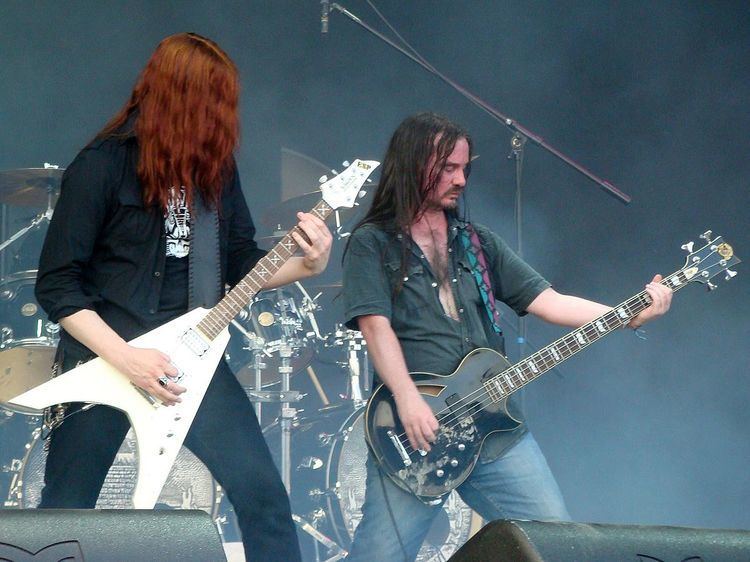 | ||
Cultural origins Early to mid-1990s, Scandinavia (particularly Gothenburg, Sweden) and United Kingdom Typical instruments Electric guitarbass guitardrums (double kick)keyboardacoustic guitarvocals | ||
Melodic death metal (also referred to as melodeath or MDM) is a subgenre of death metal that employs highly melodic guitar riffs, often borrowing from traditional heavy metal. The style originated and developed in Sweden (pioneered by At the Gates, Dark Tranquillity and In Flames) and the United Kingdom (pioneered by Carcass) during the early and mid-1990s. The Swedish death metal scene did much to popularize the style, soon centering in the "Gothenburg metal" scene.
Contents
Musical characteristics
Melodic death metal combines aspects of traditional heavy metal ranging as far as the new wave of British heavy metal, in particular fast riffing and harmonic guitar lines, with the heavily distorted guitars, fast double-bass drum patterns and occasional blast beats of death metal. The vocal style typically combines harsh screaming, sung vocals, and death growls, some artists emphasizing one of these techniques over the rest.
Origins
Much of the origin and popularity of melodic death metal can be attributed to the bands At the Gates, In Flames, and Dark Tranquillity, whose early 1990s music releases defined the genre and laid the foundation for the Gothenburg metal scene. Writer Gary Sharpe-Young considered the Gothenburg scene the commercial salvation of death metal: "Gothenburg became the new Tampa and the genre received a new lease on life." Another pioneer was the British band Carcass, which performed grindcore on its first two releases but morphed into death metal and an increasingly melodic style on the Necroticism – Descanting the Insalubrious (1991) and Heartwork (1993).
Late 1990s and influence on other genres
Since the late 1990s, melodic death metal bands have added more melodic choruses and riffs and have used keyboards more prominently than other death metal bands; their lyrics, unlike those of death metal, did not focus on death, violence, gore, horror, or blood, for the most part. Its influence lead to the diversification of modern metalcore, with melodic metalcore gaining prominence in the 2000s, especially in the United States. Stewart Mason of AllMusic stated that the "increasingly melodic" style of Swedish death metal combines the post-hardcore aggression and guttural vocals of black metal with melodic and technically proficient guitar lines. Stewart Mason claims that the style has become very popular in the United States, using the term "Swedecore" to describe Scandinavian-style metal as played by non-Nordic bands.
